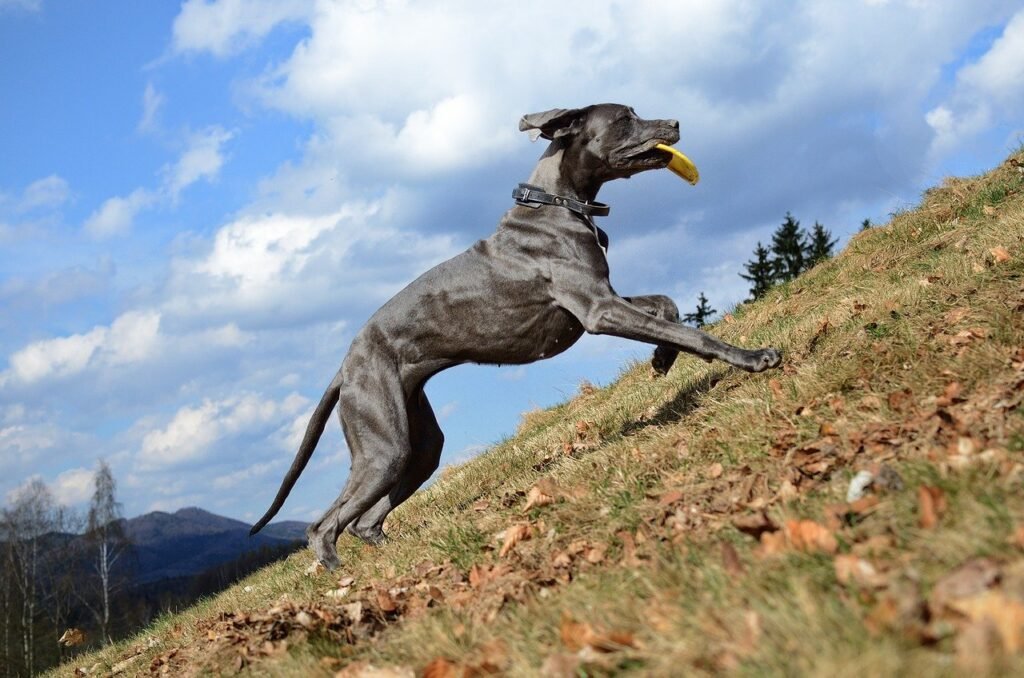If you’re like me, you need to understand why you do things and how they work. And if that’s the case, you need to read The Science of Running by Steve Magness.
He makes clear up front that this isn’t a book for beginners. His target audience is clearly competitive athletes and coaches who are looking to maximize their performance. But I’d suggest that most intermediate to advanced runners can learn something useful here, even if they aren’t running the paces that he talks about in the book.
As long as you’re not worried about, “How do I finish this race,” but instead worried about, “How can I get faster in this race,” the book will be useful.
With that in mind, let me share a few key takeaways that I learned by reading The Science of Running.
Neither Coaches Nor Scientists Know Everything
In the first half of the book, Steve Magness deals in great detail with the science of running, training, and adaptations. You’ll know more than you ever wanted to know about how the body generates energy, and what happens when your body is stressed in different ways.
But Magness is clear throughout that scientists don’t know everything there is to know about running. Their research can definitely shed light on why we do things and which things we should try, but they’re imperfect.
In particular, Magness often criticizes research for focusing on VO2 max as an indicator of fitness. It’s easy to measure, and experimental science requires measurements for comparison, but it doesn’t correlate to performance in highly trained athletes.
Another critique is that research often looks for one “magical” type of workout – as if one workout would be better than all of the others. And this resonates with the way that the media reports on sports research, with things like HIIT and interittent fasting.
But clearly there are no shortcuts or magic bullets.
At the same time, Magness is clear that while coaches may know more about some things than scientists, they don’t know everything either. In some cases, coaches are utilizing successful techniques to guide runners’ improvements. In other cases, they’re clinging to old rituals and “best practices,” hoping that they work.
One of his main criticisms of coaching philosophies are that they are often one size fits all. Each coach has a method, and that method is applied more or less uniformly to each athlete. The athlete has to fit the mold, instead of finding a mold that fits the athlete.
Another critique is that coaching philosophies are often overly precise in trying to target various intensities relative to VO2 max. While things like tempo runs and intervals are important, there are no magic paces that differentiate one workout from another.
Instead, Magness suggests looking at the totality of a workout – pace, volume, recovery time, context – and adjusting various parameters to create the desired adaptation. It’s not as simple as spending a lot of time running at a particular intensity.

Training Isn’t One Size Fits All
I mentioned this before, but it’s worth digging into a bit more.
If you read a book on training, like Jack Daniels’ Running Formula (on Amazon) or Pete Pfitzinger’s Faster Road Racing (on Amazon), the author explains their coaching philosophy and then presents a fairly coherent plan for improvement. Even though there is some element of individualization that can take place, the structure of the plan never really changes.
Likewise, if you look up a training plan on the internet, like these 12 week half marathon training plans, you won’t find many options for individualizing them. And that’s a problem.
Instead, Steve suggests you look at a particular athlete (or yourself), identify their strengths and weaknesses, and determine how to proceed from there.
He uses fast twitch and slow twitch athletes as an example. In this case, you could consider a fast twitch athlete someone who performs better at shorter events (i.e. 800m or 1600m) but underperforms at longer events (i.e. 5k or 10k). Likewise, a slow twitch athlete would be someone who performs well at longer distances (i.e. half marathon or marathon) but underperforms when stepping down to a shorter distance.
If you took two athletes – one who excelled at the 1600m and one who excelled at the half marathon – and wanted to train them to perform well in a 5k, you’d have to approach it differently.
The 1600m runner would already have a well developed base of speed. So you’d spend less time developing that speed. Although you’d include some maintenance workouts, and you’d spend a lot more time emphasizing the endurance aspect.
Conversely, the half marathon would have a much stronger base of endurance. They would instead need to spend more time developing speed so that they could run the 5k faster. They wouldn’t need to worry as much about having the endurance to maintain that speed.
Early on, novice and intermediate runners will probably benefit from any structured training. So it’s not as if Jack Daniel’s of Pfitz’s plans won’t work.
But at some point, you’ll need to individualize that plan to hit your peak. And you may be able to maximize your performance by individualizing along the way. Instead of blindly following a plan.

Start General And Move to Specific
In terms of training philosophy, I really like this idea of starting with general work and moving to specific work.
He defines general and specific work relative to the final goal race. But generally speaking, general speed work is much faster than the goal and general endurance work is much slower.
A good training plan should include both, and as you get closer to your goal race you should move closer to and put more emphasis on your actual race pace.
So a 5k runner might start with some speed work that’s quite quick as well as some general endurance work that’s quite slow. Then, they should progress to something closer to 5k – like working at 1600m or 3200m pace for speed and 10k to half marathon pace for endurance.
Finally, as they close in on the race, they should be putting an emphasis on 5k pace. Rather than varying the pace and intensity, they can adjust the recovery, volume, or other aspects of their workouts to help them adapt to be able to perform at their peak.
Know Your Why and Adjust Workouts Accordingly
There’s a really interesting section of the book on understanding how adaptations take place and how manipulating different parts of training can make those adaptations take place.
For example, you may want to work on developing your body’s ability to clear out lactate and recover. In that case, you’d want to do short bursts of intense work that builds up lactate and then recover with a more moderate effort that challenges your body’s ability to simultaneously keep running and recover.
Or, you might want to work on recruiting more muscle fibers. To do that, you could incorporate hill sprints or hill running first, which recruits new muscle fibers, and then continue to run, which will then put those muscle fibers under stress and make them more likely to be recruited next time.
In some ways, there are similarities to Jack Daniels philosophy. But here, Steve Magness adds a lot of complexity to it. It’s not just about what intensity you’re running. There are so many other things to manipulate.

Train In a Fasted State, Race In a Fed State
This is a question that comes up all the time. Can you run on an empty stomach?
I’ve always been of the general opinion that this is fine, and there’s no need to eat before running. But Steve makes a compelling case for why you should avoid eating before running, and you should intentionally run some of your longer training runs in a fasted state.
For longer distances, like half marathons and marathons, your body’s ability to efficiently utilize glycogen is really important. You have a limited amount, and if you burn through it early in a race you’ll burn out and bonk. That’s no good.
But when your body runs low on glycogen, it adapts to avoid doing so in the future. It will learn to store more glycogen, and it will learn to rely more on burning fat.
This idea isn’t earth shattering. To some extent, this is the reason why marathon plans put such a great emphasis on long runs.
But here’s where people make a mistake. They know nutrition is important in the marathon, so they incorporate food into their training. They eat before their long run, and they take in carbs throughout.
As a result, the body doesn’t fully deplete its glycogen stores. It’s never fully stressed. By avoiding the stress, you’ve undermined your body’s need to adapt.
Instead, you should do a lot of your training in a fasted state to make sure that your body becomes as efficient as possible. You should then incorporate food and nutrition into your training only to make sure that you can do so on race day.
And then you should make sure your glycogen stores are completely full on race day, and they’re kept full throughout the race, so that you can run at your best.

Hills are Awesome
Finally, Steve makes a point throughout the book of explaining the science behind hill running.
Hill sprints have always been recommended as a training tool to build strength and speed, but I never fully understood why.
According to the research Steve cites, running on hills challenges the body in different ways. Your body will recruit new muscle fibers that it wouldn’t when running on flat terrain.
One of the goals of training, according to Steve’s philosophy, is to recruit as many muscle fibers as possible and then train them so that they are fatigued. Hills meet this first goal, and then you can train them however you want.
Another advantage of hills is that they offer a natural form of alternations in your run. On a hilly course, you’ll run at a higher intensity when you hit a hill. Your body will build up some byproducts that cause or signal fatigue. It will need to get rid of them.
When you hit the downhill, your body will now have an opportunity to dispose of those byproducts and recover. In the end, this will enhance your ability to recover while running.
This is one of the great benefits of trail running, since hiking trails are often very hilly.
The takeaway for me is that I’m going to embrace hills even more than I used to. For easy recovery runs, I try to avoid overly hilly routes.
But the rest of the time, I’m happy to run up and down big hills. Every Tuesday, I run a trail run and I now make a point to sprint up a few short hills. Likewise, my Sunday long run is usually on a hilly route and I make a point of increasing the intensity over some of those hills.
Final Thoughts About the Science of Running by Steve Magness
I won’t lie. The Science of Running was dense at times and it was a long read. I’ve recently read through Jack Daniels’ Running Formula as well as Pete Pfitzinger’s Faster Road Racing, and this book was more difficult to get through.
At the same time, it was worth it. I don’t remember every little detail about the science, although I’m sure I could go back to look up something specific if I wanted to. But I’ve learned a ton about how the body reacts and adapts to training, and why training plans are developed the way that they are.
I’m still a relative novice, and my plan for the next year is to rely on Jack Daniels and Pete Pfitzinger to form the base of my training plans. I’m working on a 5k in January (see my training plan here), a half marathon in April, and a full marathon in October.
But I’m definitely going to use what I learned from Steve Magness to put those plans together and tweak them. And I’m certainly going to rely on him more, as I get more experienced and faster.
If you’re interested in running and want to know how to get faster, I would definitely recommend getting a copy of the Science of Running and reading it. It’s even available as an audiobook. You can get it through a free trial of Audible, and listen while you run!
Have you read The Science of Running? What did you think? I’d love to hear some of your take aways in the comments below.
And if you’re interested in some more reading suggestions, take a look at this list of some of the best books about running.
